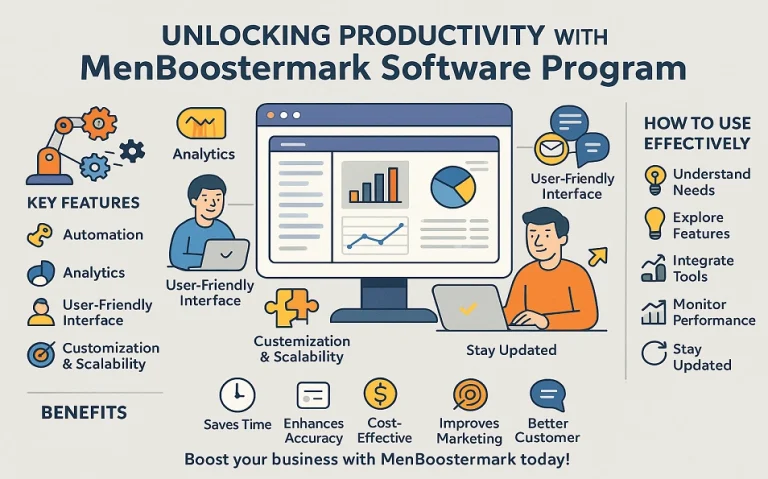Warning About Totnoidazic: Protect From the Malware Threat
In today’s hyperconnected world, cybersecurity threats are evolving at an alarming pace. Among these emerging dangers, cybersecurity experts are raising a warning about Totnoidazic, a sophisticated and adaptive form of malware. Unlike traditional viruses, Totnoidazic combines stealth, versatility, and destructive capabilities, making it a significant risk for individuals and organizations alike. This article dives deep into what Totnoidazic is, how it operates, and actionable strategies to protect yourself.
What Is Totnoidazic?
Totnoidazic is a polymorphic malware—a type of malicious software that constantly changes its code to evade detection. It operates as a multi-stage threat, meaning it can execute multiple harmful activities depending on the attacker’s goals. Common functions include:
- Data Theft: Harvesting login credentials, financial details, and sensitive documents.
- Ransomware Attacks: Encrypting files and demanding payment for decryption keys.
- Cryptojacking: Hijacking a device’s processing power to mine cryptocurrency.
- Botnet Recruitment: Enslaving infected devices to launch larger-scale cyberattacks.
Totnoidazic often disguises itself as harmless files, such as PDFs, software installers, or even system updates. Its ability to bypass traditional antivirus tools makes it particularly dangerous. Cybersecurity researchers believe it originates from advanced persistent threat (APT) groups, which target high-value entities like corporations, governments, or critical infrastructure.
How Does Totnoidazic Infect Devices?
Totnoidazic employs a combination of social engineering and technical exploits to infiltrate systems. Here’s a step-by-step breakdown of its attack lifecycle:
1. Delivery Phase
The malware spreads through:
- Phishing Campaigns: Emails mimicking trusted brands (e.g., banks, tech companies) with malicious links or attachments.
- Malvertising: Fake online ads redirecting users to compromised websites.
- Drive-by Downloads: Automatically downloading malware when visiting a hacked or malicious site.
- Software Vulnerabilities: Exploiting unpatched flaws in outdated apps, browsers, or operating systems.
2. Installation Phase
Once inside a device, Totnoidazic uses fileless malware techniques to embed itself in system memory or legitimate processes (e.g., PowerShell), leaving no trace on the hard drive. This makes detection by conventional antivirus software nearly impossible.
3. Execution Phase
The malware activates its payload based on the attacker’s objectives:
- Data Exfiltration: Sending stolen information to command-and-control (C2) servers.
- Ransomware Deployment: Encrypting files and displaying ransom notes.
- Persistent Access: Creating backdoors for future attacks.
4. Evasion Phase
Totnoidazic employs anti-analysis tactics, such as:
- Detecting virtual machines (used by researchers to study malware).
- Disabling security tools or firewalls.
- Using encryption to mask communications with C2 servers.
Signs of a Totnoidazic Infection
Early detection is critical. Watch for these indicators:
-
Unusual System Behavior:
- Frequent crashes or the “blue screen of death” (BSOD).
- Unexplained CPU/GPU usage spikes (common in cryptojacking).
-
Network Anomalies:
- Slow internet speeds due to data exfiltration.
- Unexpected outgoing traffic to unknown IP addresses.
-
File and Account Issues:
- Missing, renamed, or encrypted files (e.g., .totnoi extensions).
- Unauthorized logins or password reset emails.
-
Pop-Ups and Warnings:
- Fake system alerts urging immediate action (e.g., “Pay $500 to unlock files”).
The Far-Reaching Impact of Totnoidazic
The consequences extend beyond individual users:
-
For Individuals:
- Identity theft, drained bank accounts, or blackmail using stolen personal data.
- Permanent loss of irreplaceable files (e.g., family photos, work projects).
-
For Businesses:
- Operational shutdowns, leading to financial losses and reputational damage.
- Regulatory fines for failing to protect customer data (e.g., GDPR, HIPAA violations).
-
For Critical Infrastructure:
- Disruption of healthcare systems, power grids, or transportation networks.
A 2023 report by cybersecurity firm Kaspersky noted that ransomware attacks (like those linked to Totnoidazic) cost businesses an average of $1.85 million per incident, excluding reputational harm.
Advanced Protection Strategies Against Totnoidazic
1. Strengthen Your Defense Layers
- Endpoint Detection and Response (EDR): Use tools like CrowdStrike or Microsoft Defender for real-time monitoring.
- Network Segmentation: Isolate critical systems to limit malware spread.
- Email Filtering: Deploy solutions like Proofpoint to block phishing attempts.
2. Adopt Zero-Trust Principles
Verify every user and device attempting to access your network, even if they’re already inside. Require multi-factor authentication (MFA) for all accounts.
3. Regular Updates and Patching
Cybercriminals exploit known vulnerabilities. Enable automatic updates for:
- Operating systems (Windows, macOS, Linux).
- Apps (browsers, Adobe, Microsoft Office).
- IoT devices (smart cameras, routers).
4. Educate Users
Human error is the weakest link. Train teams to:
- Recognize phishing red flags (e.g., typos, mismatched URLs).
- Avoid downloading software from unofficial sources.
- Report suspicious activity immediately.
5. Backup and Disaster Recovery
Follow the 3-2-1 rule: Keep 3 copies of data, on 2 different media, with 1 stored offline. Test backups regularly to ensure they’re functional.
Responding to a Totnoidazic Attack
If you suspect an infection:
- Isolate the Device: Disconnect from Wi-Fi, Bluetooth, and other networks.
- Enter Safe Mode: Restart the device in safe mode to prevent malware from loading.
- Use Removal Tools:
- Run scans with Malwarebytes, HitmanPro, or Norton Power Eraser.
- Employ specialized ransomware decryption tools (if available).
- Wipe and Restore: Reinstall the OS and restore files from a clean backup.
- Forensic Analysis: Work with cybersecurity experts to identify the attack vector and prevent future breaches.
Note: Never pay ransoms. Law enforcement agencies like the FBI advise against it, as payment funds criminal networks and doesn’t guarantee file recovery.
The Future of Totnoidazic and Cybersecurity
As technology advances, so will Totnoidazic’s capabilities. Experts predict increased use of:
- Artificial Intelligence (AI): To automate attacks and personalize phishing schemes.
- IoT Targeting: Exploiting smart home devices as entry points.
- Supply Chain Attacks: Infecting software updates from trusted vendors.
To stay ahead, organizations must invest in:
- Threat Intelligence Platforms: Monitor dark web forums for leaked data or attack plans.
- Incident Response Teams: Develop protocols for rapid containment and recovery.
- Collaboration: Share threat data with industry peers and agencies like CISA.
Conclusion
Totnoidazic exemplifies the growing sophistication of cyber threats in our digital era. By understanding its tactics, implementing layered defenses, and fostering a culture of cybersecurity awareness, individuals and organizations can mitigate risks effectively. Stay proactive, stay informed, and remember: In cybersecurity, preparation is the ultimate defense.
Read More : noraxidbemosoz , is hizzaboloufazic for babies
Frequently Asked Questions (FAQs)
1. Can antivirus software alone stop Totnoidazic?
Traditional antivirus tools may miss Totnoidazic due to its polymorphic nature. Pair them with EDR solutions and behavior-based detection for stronger protection.
2. How do I know if my backup is safe from Totnoidazic?
Store backups offline or in immutable cloud storage (e.g., AWS S3 Glacier). Regularly scan backups for malware before restoration.
3. Are Mac and Linux devices immune to Totnoidazic?
No. While less common than Windows threats, cross-platform malware is rising. Keep all systems updated and avoid complacency.
Read Also : money6x.com make money, money6x.com how to make money , money6x.com employment







